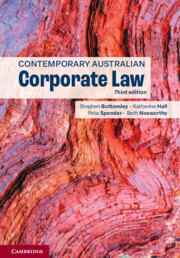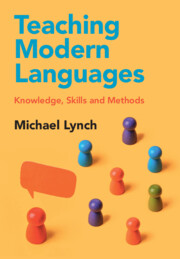Refine search
Actions for selected content:
37335 results in Cambridge Textbooks
Part II - Responding to Global Environmental Problems
-
- Book:
- Global Environmental Politics
- Published online:
- 04 September 2025
- Print publication:
- 18 September 2025, pp 85-323
-
- Chapter
- Export citation
7 - Multilateral Diplomacy
- from Part II - Responding to Global Environmental Problems
-
- Book:
- Global Environmental Politics
- Published online:
- 04 September 2025
- Print publication:
- 18 September 2025, pp 112-139
-
- Chapter
- Export citation
2 - The Tragedy of the Commons
- from Part I - Why Do Environmental Problems Occur?
-
- Book:
- Global Environmental Politics
- Published online:
- 04 September 2025
- Print publication:
- 18 September 2025, pp 19-33
-
- Chapter
- Export citation
12 - Problem Displacement
- from Part II - Responding to Global Environmental Problems
-
- Book:
- Global Environmental Politics
- Published online:
- 04 September 2025
- Print publication:
- 18 September 2025, pp 253-279
-
- Chapter
- Export citation
Maps
-
- Book:
- Global Environmental Politics
- Published online:
- 04 September 2025
- Print publication:
- 18 September 2025, pp xiv-xiv
-
- Chapter
- Export citation
11 - Individualising Responsibility
- from Part II - Responding to Global Environmental Problems
-
- Book:
- Global Environmental Politics
- Published online:
- 04 September 2025
- Print publication:
- 18 September 2025, pp 226-252
-
- Chapter
- Export citation
1 - Global Politics and the Environment
-
- Book:
- Global Environmental Politics
- Published online:
- 04 September 2025
- Print publication:
- 18 September 2025, pp 1-16
-
- Chapter
- Export citation
14 - Appraising Global Environmental Governance
- from Part II - Responding to Global Environmental Problems
-
- Book:
- Global Environmental Politics
- Published online:
- 04 September 2025
- Print publication:
- 18 September 2025, pp 312-323
-
- Chapter
- Export citation

Contemporary Australian Corporate Law
-
- Published online:
- 11 September 2025
- Print publication:
- 25 September 2025
-
- Textbook
- Export citation

The Arts and Meaning-Making with Children
-
- Published online:
- 11 September 2025
- Print publication:
- 25 September 2025
-
- Textbook
- Export citation

Global Environmental Politics
- Problems, Policy, and Practice
-
- Published online:
- 04 September 2025
- Print publication:
- 18 September 2025
-
- Textbook
- Export citation

Teaching Modern Languages
- Knowledge, Skills and Methods
-
- Published online:
- 04 September 2025
- Print publication:
- 12 June 2025
-
- Textbook
- Export citation
Dedication
-
- Book:
- Satellite Remote Sensing for Water Management
- Published online:
- 10 October 2025
- Print publication:
- 04 September 2025, pp v-vi
-
- Chapter
- Export citation
9 - Crop and Irrigation Management from Space
-
- Book:
- Satellite Remote Sensing for Water Management
- Published online:
- 10 October 2025
- Print publication:
- 04 September 2025, pp 232-262
-
- Chapter
- Export citation
Contents
-
- Book:
- Satellite Remote Sensing for Water Management
- Published online:
- 10 October 2025
- Print publication:
- 04 September 2025, pp vii-xii
-
- Chapter
- Export citation
5 - Satellite Remote Sensing of Precipitation
-
- Book:
- Satellite Remote Sensing for Water Management
- Published online:
- 10 October 2025
- Print publication:
- 04 September 2025, pp 85-124
-
- Chapter
- Export citation
10 - Satellite Remote Sensing of Surface Water Temperature
-
- Book:
- Satellite Remote Sensing for Water Management
- Published online:
- 10 October 2025
- Print publication:
- 04 September 2025, pp 263-305
-
- Chapter
- Export citation
8 - Reservoir Management from Space
-
- Book:
- Satellite Remote Sensing for Water Management
- Published online:
- 10 October 2025
- Print publication:
- 04 September 2025, pp 199-231
-
- Chapter
- Export citation
12 - Citizen Science and Water Management
-
- Book:
- Satellite Remote Sensing for Water Management
- Published online:
- 10 October 2025
- Print publication:
- 04 September 2025, pp 323-330
-
- Chapter
- Export citation
11 - Social Justice in Water Management
-
- Book:
- Satellite Remote Sensing for Water Management
- Published online:
- 10 October 2025
- Print publication:
- 04 September 2025, pp 306-322
-
- Chapter
- Export citation
